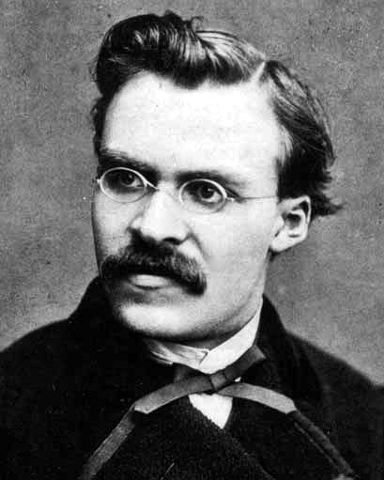Friedrich Nietzsche: Philosopher, Philologist, Composer?

Friedrich Nietzsche is best known for his philosophy through his works such as “Beyond Good and Evil,” “The Genealogy of Morals,” and “Thus Spoke Zarathustra.” Through this, he criticizes objective morality and the concept of god itself. However, many do not know that he was also a composer!
Nietzsche was very good friends with Richard Wagner, both having very similar ideas at one point. He was obsessed with Georges Bizet’s Carmen. Nietzsche was definitely better known for his essay writing than any sort of composition, but one quick Google Search shows that he composed a fair amount of music. From the lilting, casually satisfied waltz of “Eine Sylvesternacht, for violin and piano” to the somber dirge of “Miserere,” this man was indeed very eclectic. According to The New Yorker, his compositions were met with mixed reception. Liszt, on one hand, was fond of his work, while Hans von Bulow called his music “the most undelightful and the most antimusical draft on musical paper that I have faced in a long time.” So why did he not gain more recognition for his musical work? Could it have been that Bulow was right?
Upon listening, the answer would be “no,” but that does not mean that his amateurish skills do not show. Most of his catalog is instrumental and piano music. “Miserere” is in the style of sacred homophonic chant music. Certainly this is nothing that has not been heard before, but it is unique for a secular composer during the time period. In his piece “Nachklang Einer Silversternacht,” the piano chords are perfectly consonant and clear, but the piece drags on in an extremely through-composed fashion. Often times, he will jump randomly to another section without resolving the last section. Later on, the emancipation of dissonance became a great compositional innovation, but this piece is very consonant like much of the music of the Romantic era, making the changes seem awkward and out of place. Another parallel could be lieder or some other styles that were melodic and eschewed functional harmony of the Common Practice Period, but the difference in this piece by Nietzsche is that the form is completely through composed.
What can also be seen is that there is very little in the realm of dynamic contrast. In “Nachklang,” none of the sections really have much sense of a dynamic build, leaving the listener wondering where the most important release points are in each section. However, Nietzsche’s “Miserere” does seem to do this.
The music that Friedrich Nietzsche wrote can be seen as influential on styles in the 20th century, much like Erik Satie’s influence on “Les Six.” However, this is also precisely the setback for Nietzsche. Satie said that he aimed to write “furniture music,” which can be a good descriptor for Nietzsche’s music too. Overall, Friedrich Nietzsche’s music is inoffensive and decent at best and he seems to possess basic knowledge of music theory, but it isn’t something I would sit in a den and listen to for its sheer artistic merit. The music is more suited for niche groups of people and as great background music in fancy restaurants. There is nothing wrong with this, considering the amount of overproduced new age and smooth jazz music that gets played in those settings. I certainly am glad that Friedrich Nietzsche stuck to philosophy and philology, but if you are a fan of him, his music is certainly a curious relic of lesser-known art in the Romantic Era.